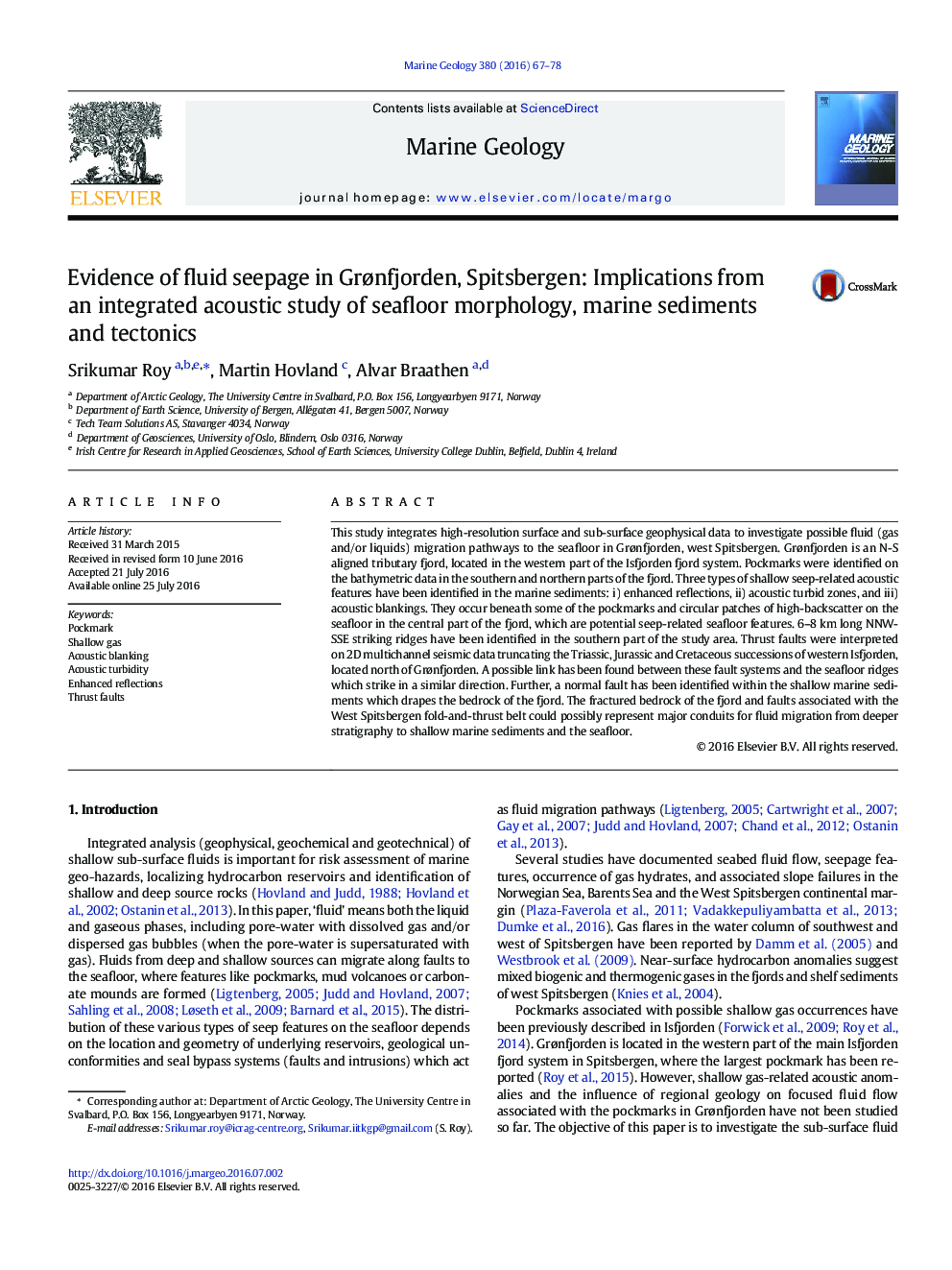| Article ID | Journal | Published Year | Pages | File Type |
|---|---|---|---|---|
| 6441285 | Marine Geology | 2016 | 12 Pages |
â¢Shallow-gas related acoustic features recorded on sub-bottom acoustic dataâ¢Linkage of seafloor seeps (pockmarks) with shallow gas-related acoustic featuresâ¢Backscatter anomalies possibly associated with seafloor seepsâ¢Fluid migration pathways via fault conduits
This study integrates high-resolution surface and sub-surface geophysical data to investigate possible fluid (gas and/or liquids) migration pathways to the seafloor in Grønfjorden, west Spitsbergen. Grønfjorden is an N-S aligned tributary fjord, located in the western part of the Isfjorden fjord system. Pockmarks were identified on the bathymetric data in the southern and northern parts of the fjord. Three types of shallow seep-related acoustic features have been identified in the marine sediments: i) enhanced reflections, ii) acoustic turbid zones, and iii) acoustic blankings. They occur beneath some of the pockmarks and circular patches of high-backscatter on the seafloor in the central part of the fjord, which are potential seep-related seafloor features. 6-8 km long NNW-SSE striking ridges have been identified in the southern part of the study area. Thrust faults were interpreted on 2D multichannel seismic data truncating the Triassic, Jurassic and Cretaceous successions of western Isfjorden, located north of Grønfjorden. A possible link has been found between these fault systems and the seafloor ridges which strike in a similar direction. Further, a normal fault has been identified within the shallow marine sediments which drapes the bedrock of the fjord. The fractured bedrock of the fjord and faults associated with the West Spitsbergen fold-and-thrust belt could possibly represent major conduits for fluid migration from deeper stratigraphy to shallow marine sediments and the seafloor.
